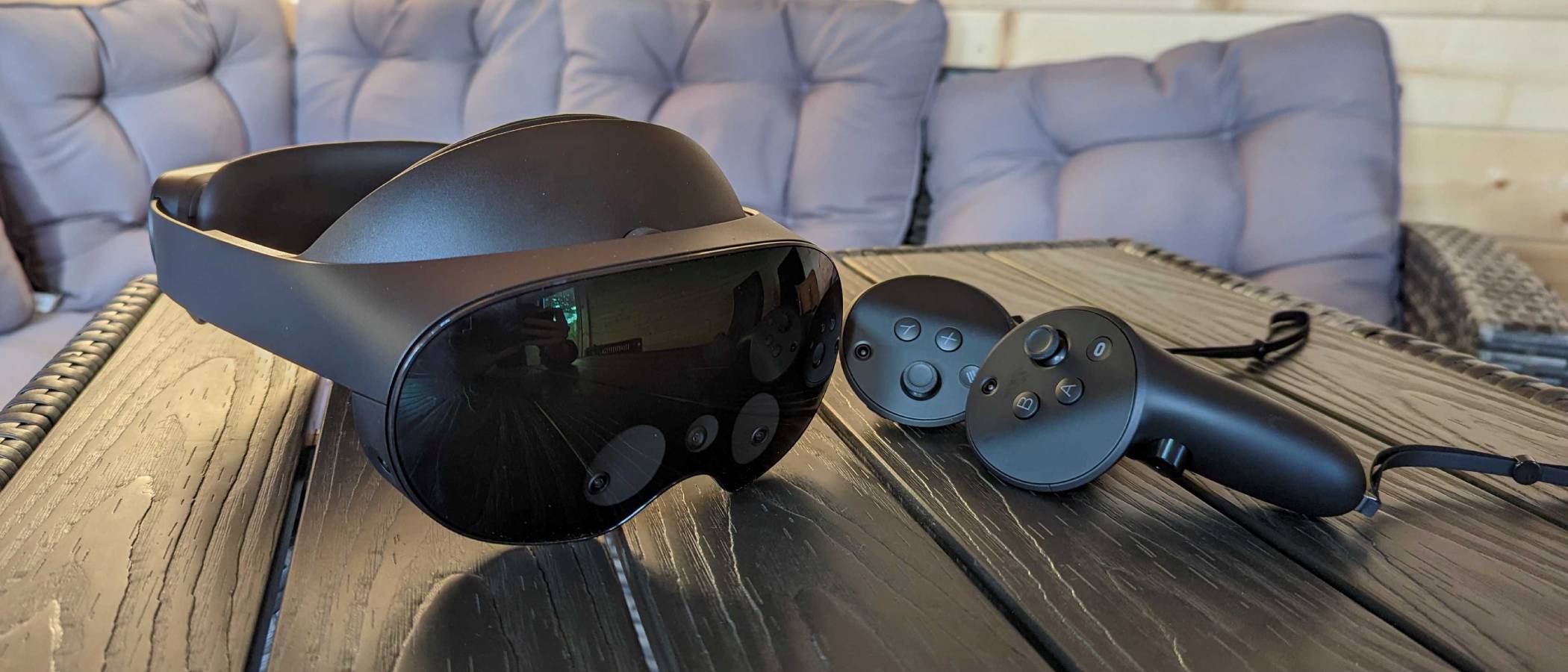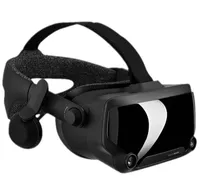TechRadar Verdict
The Meta Quest Pro is an impressive mixed-reality headset, but its short battery life, the decision to have it focus on MR, and pricey features that feel underused may put some users off this next-gen hardware.
Pros
- +
Impressive performance
- +
Comfortable yet secure fit
- +
Excellent controllers
Cons
- -
Short battery life
- -
Pricey
- -
New features are currently underused
Why you can trust TechRadar
Writer's note [March 3, 2023]: we originally published the Meta Quest Pro review with a rating of 3.5 stars. However, following a permanent price drop from $1,500 / £1,500 / AU$2,450 to $999.99 / £999.99 / AU$1,729.99 we have adjusted our rating to 4 stars to reflect its new position in the market.
The Meta Quest Pro is an impressive device, but it’s not quite the ultimate VR headset we were anticipating.
Sure, it comes with 12GB of RAM, a more powerful Snapdragon XR2 Plus processor, and 256GB of storage space, which will enable it to run all Oculus Quest 2 games comfortably. But, based on our experience with the headset, it’s clear that the Quest Pro is a powerful mixed-reality device – not a headset that completely takes you out of the real world.
Its new color passthrough feature, in conjunction with the gap around the sides and bottom of the headset, gives you a clear view of the real world even while you’re immersed in an experience. However, while this makes experiences that blend the real and virtual worlds feel more immersive, true-VR games can suffer.
We’re also disappointed by the headset’s lackluster battery life, and we’re not convinced that face-tracking is more than a gimmick right now. Face-tracking and eye-tracking have promise, but there’s not yet a strong suite of software that justifies their inclusion quite yet.
That said, if you have the budget to splash out on next-gen XR hardware the Meta Quest Pro is a great pick; but if money is tight, or you're not interested in mixed-reality, then the $999.99 / £999.99 / AU$1,729.99 price may seem a bit steep.
If that's the case, you might be more interested in the Meta Quest 3, which will launch at $499 / £499. That device was revealed at Meta Connect 2023, and you can read our full Meta Quest 3 review for our thoughts (TL;DR we think it's great).
Sign up for breaking news, reviews, opinion, top tech deals, and more.
Meta Quest Pro: Price and availability
From March 15 the Meta Quest Pro will cost $999.99 / £999.99 / AU$1,729.99, significantly less than its original $1,500 / £1,500 / AU$2,450 price.
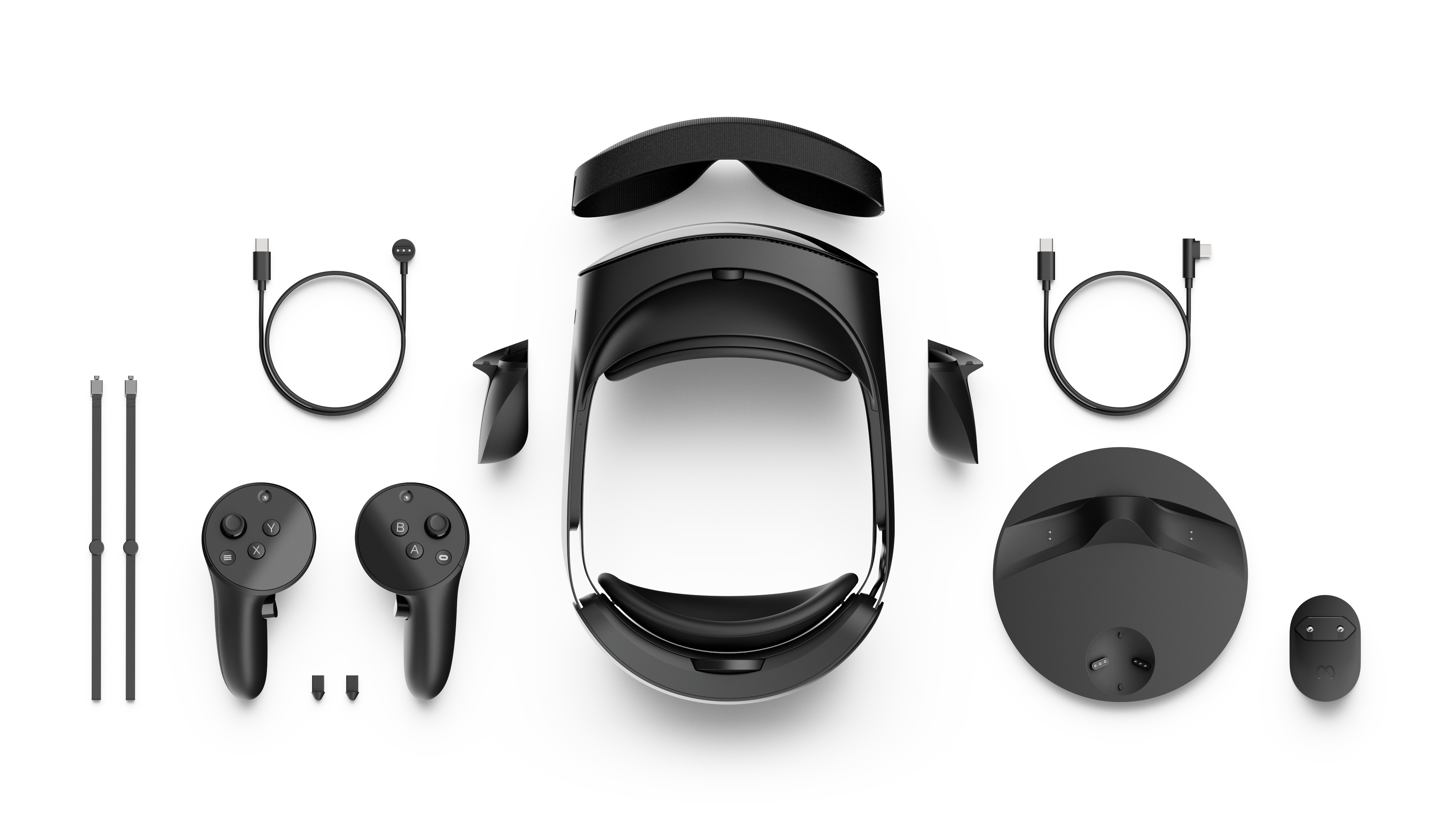
This is still a hefty price increase over the Oculus Quest 2 – it's around two times more expensive – though the upgrades the Quest Pro affords are a better fit at its new price.
It also better matches what other premium headsets will set you back. A Valve Index-powered VR setup will cost you $999 / £919 (about AU$1,430) for the headset (and at least $500 / £500 / AU$800) while the upcoming HTC Vive XR Elite is priced at $1,099 / £1,299 / around AU$1,625.
You can always check out the latest Meta Quest promo codes for ways to save money on the premium VR headset.
Meta Quest Pro: Design
Straight away it’s clear that the Meta Quest Pro is sporting some major design changes compared with the Oculus Quest 2 – and we’re not just talking about its all-black exterior, as opposed to the Quest 2’s all-white finish.
The first upgrade is the strap. The Quest 2’s all-elastic one is swapped out for a plastic strap that’s near-identical to the Elite Strap that’s an optional extra for the older hardware. The Meta Quest Pro’s strap is equipped with additional padding to make it comfier and uses a wheel for adjusting the fit, which makes it easier to get a secure yet not-too-tight fit.
The strap isn’t just for comfort – it also houses the Meta Quest Pro’s battery. This means that unlike the Quest 2, the Meta Quest Pro isn’t front-loaded in terms of its weight distribution; instead, the weight of the headset is spread out across your head. Because of this, even though the Pro is 7.7oz (219g) heavier than the Quest 2 at 1.6lbs (722g), it actually feels easier to wear.
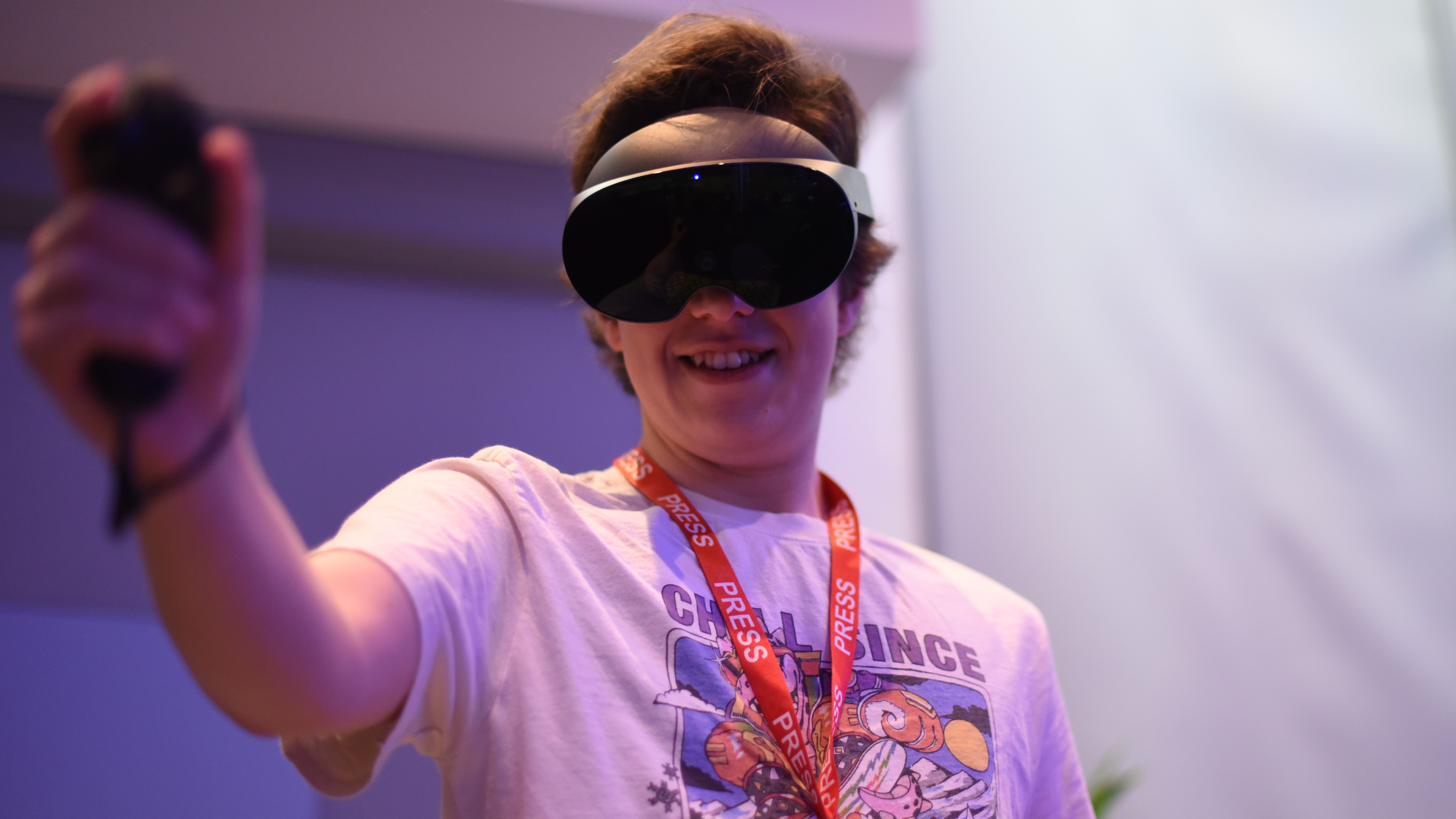
Another major change is one necessitated by the fact that the Meta Quest Pro is a mixed- reality, or MR, headset, rather than a VR-exclusive device.
Unlike the Quest 2, which creates a seal around your eyes that entirely blocks out the outside world, the front padding of the Quest Pro is designed to give you a pretty good view out of the sides and bottom of the headset while you’re wearing it.
For mixed-reality experiences, this is perfect. Your view of the real world provides you with context and a sense of continuity while you’re wearing the headset that helps to sell its virtual creations as real. Case in point: when we were looking at our virtual hands and arms we could follow them off-screen and see them morph into our real arms through the gap, which helped to make our avatar’s limbs feel more real.
But in virtual reality experiences, this constant view of the real world can be off-putting. This reviewer personally had very little issue with it, and when we used the Quest Pro’s included clip-on blinders – which obstruct your view to the left and right – the experience wasn’t noticeably different from a Quest 2 in terms of immersion. However, others who’ve tried the device – including this reviewer’s partner and many folks online – have expressed their dislike of the setup, finding it immersion-breaking.
The issue can be solved by purchasing a Quest Pro add-on which creates a full seal around your eyes; however, that will set you back $50 / £50 / AU$79.99, and when you’ve already spent $999.99 / £999.99 / AU$1,729.99 you may not be keen to shell out more.
The last big change to the Quest Pro is its controllers. The button, trigger and thumbstick layout is generally unchanged from what Meta/Oculus has given us before, but while the original Quest and the Quest 2 were powered by replaceable AA batteries, the battery that’s built into the Quest Pro's headset is rechargeable.
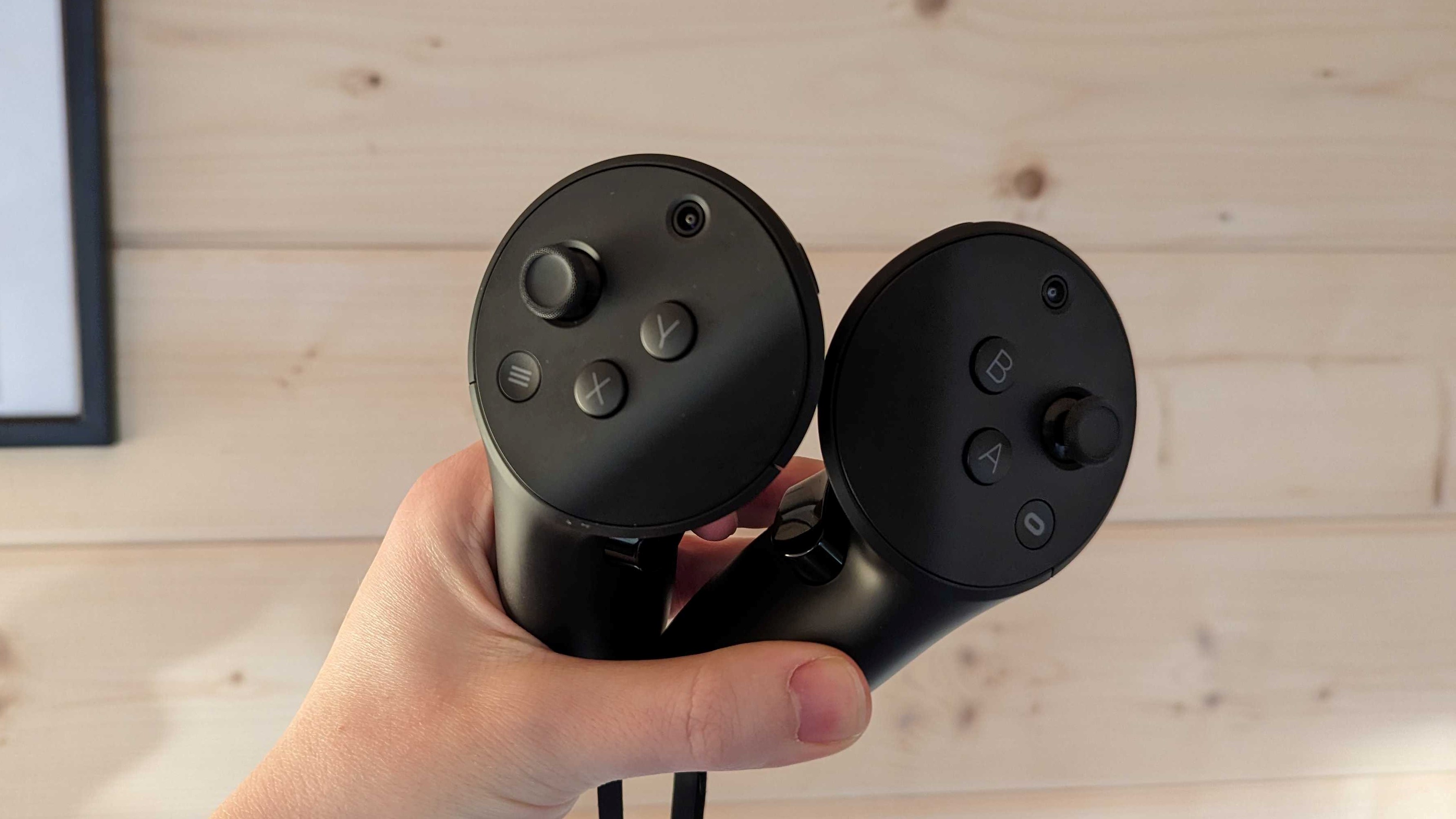
The other alteration to the controllers is that the tracking ring has been removed. Instead of a ring that allows the headset to follow the handsets as they move, these controllers use cameras to track their position relative to the headset. This allows players to move the controllers out of sight of the headset’s sensors – for example placing them behind your back – without losing tracking.
However, this alteration does make the Quest pro’s controllers weightier than their predecessors – the Quest 2’s handsets clock in at about 5.3oz (150g) with a battery in while the Quest Pro’s are 5.8oz (164g) – though based on how heavy they feel we’d have guessed the difference would be larger.
One other big upgrade is that the controller’s straps can be replaced with a nib that turns them into a stylus – in certain apps this allows you to write on a physical surface and see virtual words appear in the space. The feature is neat, but we’re worried the tiny nibs will be easy to lose, especially as there’s no obvious place to store them except back in the original packaging.
Meta Quest Pro: Performance and specs
In terms of performance, the Quest Pro is one of the best standalone VR headsets we’ve used. Its new souped-up Snapdragon XR2 Plus chip and 12GB of RAM were able to easily handle everything we threw at the headset with no noticeable lag or other issues.
On top of that, the Quest Pro boasts Wi-Fi 6E support, 256GB of storage, and new miniLED LCD panels that offer 37% more pixels per inch, 10% more pixels per degree, and 75% better contrast. These improved panels made the headset’s visuals much more vivid and crisp than those produced by the Quest 2.
One other upgrade to the device is the hand-tracking. Using the Meta Quest Pro without controllers is generally a much better experience than on its older hardware. The feature is by no means flawless, but if you enjoy playing controller-free VR this headset could be a great fit for you.
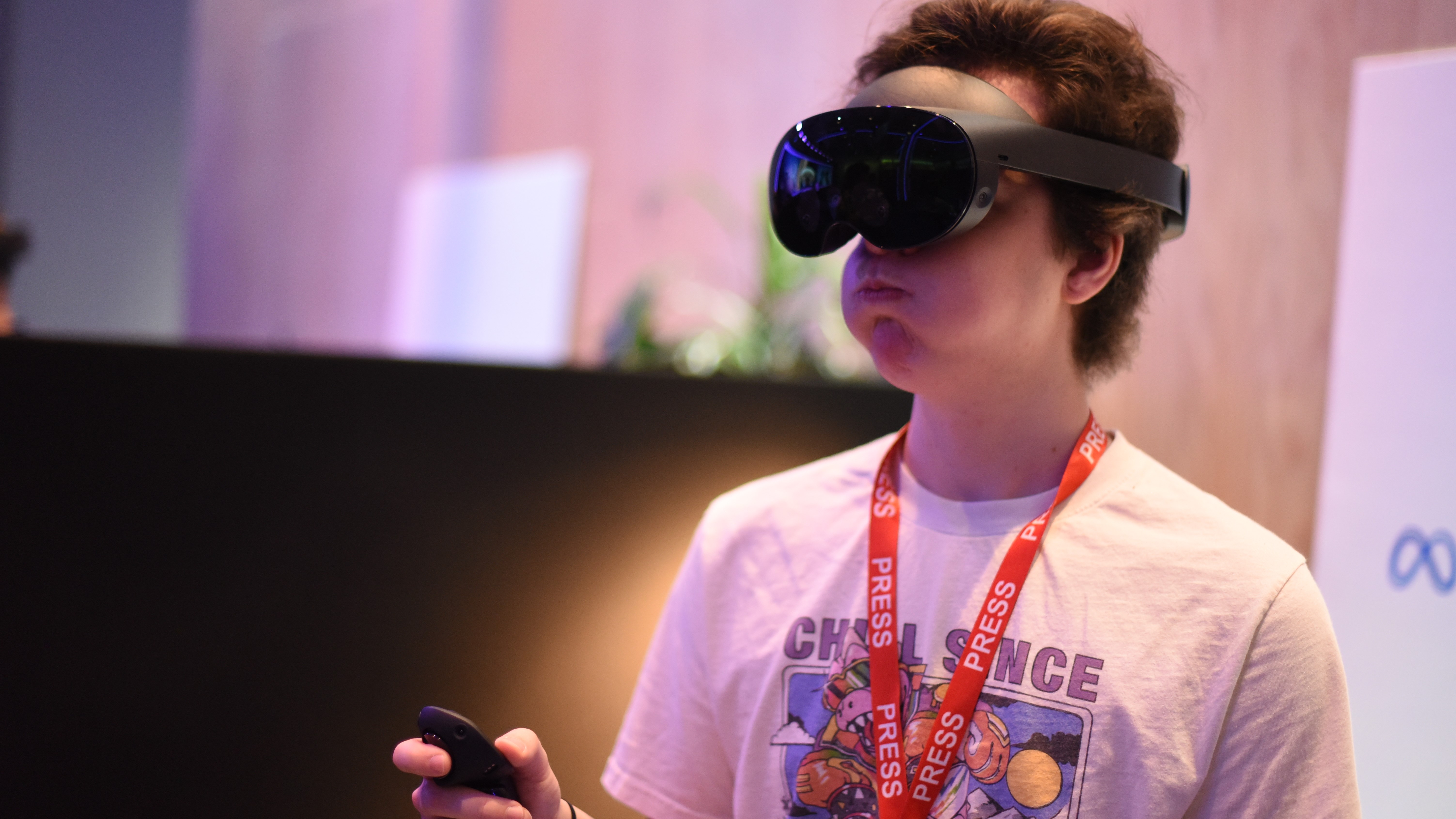
The only minor letdown is that the headset’s display is capped at a refresh rate of 90Hz, whereas the Quest 2 can deliver 120Hz. Meta didn’t provide a definitive answer as to whether the Meta Quest Pro will in the future support a refresh rate of 120Hz, only saying that it’s “not optimized” for rates that high. 90Hz is the minimum required to prevent most users from experiencing motion sickness while wearing the headset, but it would have been nice to have the option to use a higher frame rate for even smoother experiences.
Meta Quest Pro: Features
It’s not just the design that makes the Meta Quest Pro feel like a device that’s dedicated to mixed reality; its features do too.
Color passthrough is a major upgrade to the Quest lineup’s mixed-reality capabilities, and based on our experience, titles like Wooorld, Painting VR, and Tribe XR are all better for its inclusion. The Quest Pro’s video feed of the real world is far from lifelike, however – the image is somewhat grainy and the color is off, especially in spaces that aren’t well-lit.
The other big new features of the Quest Pro are its eye and face tracking, although there isn’t yet a proper practical demonstration of what eye-tracking means for the experiences we can play (when we played Horizon Call of the Mountain during a PlayStation VR 2 demo session and were able to interact with the characters in realistic ways).
The Quest Pro’s technology did, however, enable the headset to detect what changes we needed to make to our fit to ensure that we were wearing the headset correctly, and had the lenses in the best spot for our eyes.
As for face tracking, we’re not yet the biggest fan – and we're glad to hear that it's a feature we can easily switch off. While other people at the Quest Pro’s pre-launch demo absolutely loved it, we found that the alien avatar that was meant to be mimicking us could only muster a terrifying grimace when we were in fact smiling and laughing.

Over time we expect these features will get a tune-up, but more importantly we hope some must-play software that takes advantage of them is released sometime in the near future.
As things stand, color passthrough, and face and eye tracking, feel fairly gimmicky. While some games and apps are already putting the features to use, we wish more software existed to make the Quest Pro’s roughly $500 / £500 / AU$1,200 worth of upgrades over the Quest 2 feel completely justified.
Thanks to its March 15, 2023 price cut there's the Quest Pro feels much better bang for your buck, but we still hope to see Meta and its collaborators release experiences that prove to us why you need to pick up a Quest Pro instead of a Quest 2. At least in terms of their passthrough and face-tracking capabilities.
Meta Quest Pro: Battery life
One of our biggest concerns before testing the Meta Quest Pro was its battery life – and unfortunately, we were right to be a bit worried.
Meta had told us at a pre-announcement briefing that the headset can last for around one-and-a-half to two hours between charges – which felt so remarkably poor that one journalist let out an audible “oof” during the briefing when they heard it.
For comparison, the Quest 2 lasts for around two to three hours, with the optional Elite Strap with battery add-on bringing it up to around four. Considering that the Quest Pro costs roughly four times the price of the Quest 2, and around three times the price of the Quest 2 plus the battery upgrade, we would have expected its battery life to be just as good.
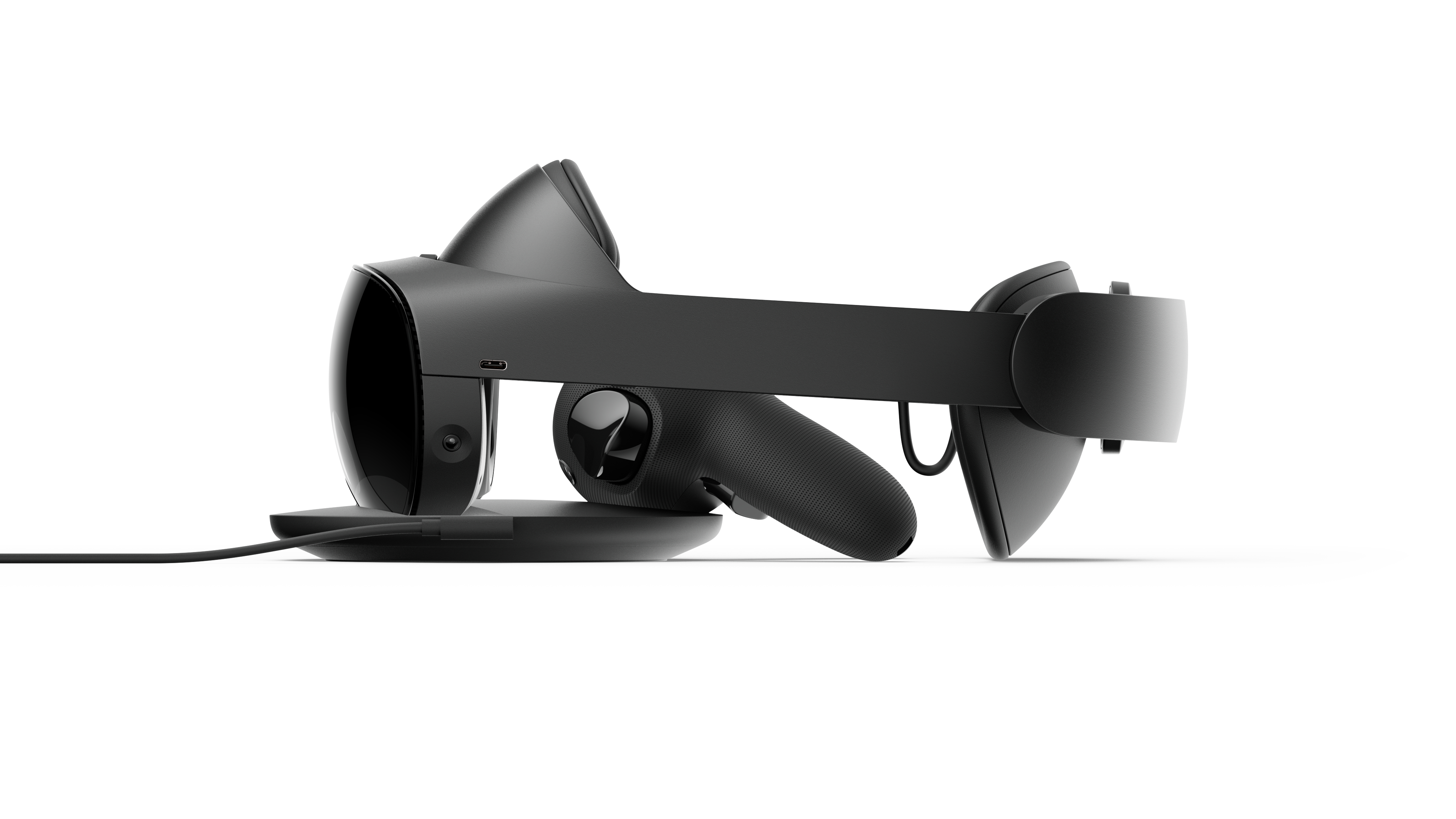
While Meta has argued that people won’t really spend longer than a couple of hours at a time in VR / MR on the Quest 2 – and those who do can use it with the charging cable plugged in – the Quest Pro’s comfier design might encourage users to stay immersed for longer.
If you want to use the headset for short bursts then the battery life is more than acceptable, but based on our testing it won’t be a good fit for players who like to enjoy longer, uninterrupted VR and MR experiences.
Should I buy the Meta Quest Pro?
Buy it if…
You want a powerful standalone headset
If you want a powerful VR headset that isn’t tethered to your PC or console, the Quest Pro, with its Snapdragon XR2 Plus chip and 12GB RAM, is the device you need.
You find the Quest 2 uncomfortable
The Quest Pro’s design isn’t perfect, but we found it to be much more comfortable than the Quest 2, and one of the comfiest standalone VR headsets yet.
You like being an early adopter
Many aspects of the Quest Pro feel premature right now – there isn’t yet enough software that takes advantage of its upgrades. But if you don’t mind that, and love being at the cutting edge with the latest tech, then you’ll likely enjoy using this MR headset.
Don’t buy it if…
You’re only interested in VR
This is a mixed-reality-first headset. If you only care about VR, there are some technical and design aspects that will make the Meta Quest Pro a disappointment.
You want to play for hours at a time
If you want to enjoy VR or MR for several hours at a stretch then this may not be the headset for you – unless you’re okay with having the charging cable plugged in at all times.
You want something affordable
The Meta Quest Pro is undeniably pricey – if you’re on a budget you’d be much better off with something like the Quest 2.
Also consider
Oculus Quest 2
Meta's Oculus Quest 2 won’t offer the same level of performance as the Quest Pro, but it's much better value for money and simply one of the best options for people looking to dip their toes into VR.
Valve Index
If you have a beefy PC set up you might like the Valve Index. This headset's impressive specs allow it to deliver some great VR experiences, though you will miss out on the Quest Pro's exclusive library of games like Resident Evil 4 VR and you'll have to put up with being tethered to your PC.
Nreal Air AR Glasses
The Nreal Air AR Glasses are a very different product to the Meta Quest Pro or any other VR headset (and suffer from the Pro's lack of must-have software) but they are nevertheless an intriguing AR gadget that frequent commuters might want to consider.
Meta Quest Pro Report Card
| Attribute | Notes | Score |
|---|---|---|
| Design | The design of this headset is superb, and it feels incredibly comfy and secure on our face. The biggest letdown is a lack of an in-box add-on that turns this MR headset into a VR-focused one – you’ll have to pay extra for the privilege. | 4/5 |
| Performance | The Meta Quest Pro is one of the best-performing standalone headsets out there. If you want to experience VR free from the tether of a PC or console, this is one of the best options out there. | 5/5 |
| Features | The Meta Quest Pro’s features promise a lot but underdeliver, as right now there just isn’t a killer suite of software that justifies its expensive upgrades. | 2.5/5 |
| Battery life | This headset’s relatively short battery life won’t disappoint every user, but if you like to enjoy hours-long solo sessions, or have friends over to play VR games, you may find your experience is ruined by the need to recharge your Quest Pro after too short a time. | 3/5 |
| Value | Even after its permanent price drop the Meta Quest Pro doesn’t fully justify its higher cost compared to the Quest 2, however, it’s not terrible value for money if you’re after a next-gen VR experience. | 3.5/5 |
First reviewed: January 2023
How we test
We pride ourselves on our independence and our rigorous review-testing process, offering up long-term attention to the products we review and making sure our reviews are updated and maintained - regardless of when a device was released, if you can still buy it, it's on our radar.

Hamish is a Senior Staff Writer for TechRadar and you’ll see his name appearing on articles across nearly every topic on the site from smart home deals to speaker reviews to graphics card news and everything in between. He uses his broad range of knowledge to help explain the latest gadgets and if they’re a must-buy or a fad fueled by hype. Though his specialty is writing about everything going on in the world of virtual reality and augmented reality.
